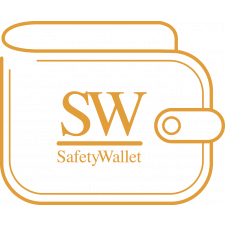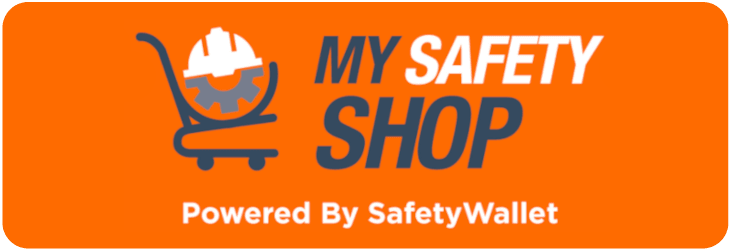The Most Commonly Overlooked Risks in the Workplace
Maintaining a safe and secure workplace requires vigilant attention to potential hazards and risks. While many organisations have robust hazard identification and risk assessment processes in place, certain risks can still be easily overlooked. These overlooked risks pose a significant threat to employee safety and well-being. In this blog, we will explore some of the most commonly overlooked risks in the workplace, highlighting the importance of thorough hazard identification, risk assessment, and fostering a strong safety culture.
Understanding Overlooked Risks in the Workplace
What are overlooked risks in the workplace?
Overlooked risks in the workplace refer to potential hazards that are often missed or underestimated during hazard identification and risk assessment processes. These risks may not receive adequate attention, leading to an increased likelihood of accidents, injuries, and other adverse events.
The Importance of Comprehensive Hazard Identification and Risk Assessment
Why is comprehensive hazard identification and risk assessment crucial?
Comprehensive hazard identification and risk assessment are vital for identifying and mitigating potential risks in the workplace. By conducting thorough assessments, organisations can uncover hidden or overlooked risks, enabling them to implement effective control measures and prevent accidents. This approach fosters a culture of safety and ensures the well-being of employees.
Commonly Overlooked Workplace Hazards
What are some commonly overlooked hazards in the workplace?
While the specific hazards vary across industries and workplaces, there are several commonly overlooked risks that deserve attention:
Ergonomic Hazards:
Ergonomic hazards arise from poor workstation setup, repetitive tasks, or inadequate ergonomic equipment. These risks can lead to musculoskeletal disorders, such as back pain, strains, and carpal tunnel syndrome.
Mental Health Hazards:
Work-related stress, long working hours, and inadequate support systems can contribute to mental health hazards. These risks can result in anxiety, depression, burnout, and decreased productivity.
Housekeeping Hazards:
Untidy or cluttered workspaces can create trip and fall hazards, obstruct emergency exits, and impede movement. Poor housekeeping practices increase the risk of accidents and injuries.
Workplace Violence:
Violence in the workplace, including physical assaults, threats, or harassment, is often underestimated or overlooked. Employers should establish preventive measures and provide training to address this risk.
Strategies to Address Overlooked Risks
How can organisations address overlooked risks in the workplace?
Organisations can take proactive measures to address overlooked risks:
Enhanced Training and Awareness:
Regular training sessions and workshops can educate employees about overlooked risks and the importance of reporting hazards promptly. Increasing awareness fosters a proactive approach to safety.
Engage Employees:
Involving employees in hazard identification and risk assessment processes empowers them to identify and report overlooked risks. Encouraging open communication and providing reporting channels facilitate timely hazard identification.
Continuous Improvement:
Organisations should regularly review and update hazard identification and risk assessment procedures. This ensures that emerging risks are adequately captured and existing control measures remain effective.
Safety Culture:
Promoting a strong safety culture emphasizes employee well-being and encourages everyone to take responsibility for safety. Establishing safety committees, recognising safe practices, and implementing feedback systems all contribute to a positive safety culture.
Identifying and addressing overlooked risks in the workplace is crucial for maintaining a safe and secure working environment. Organisations must prioritise comprehensive hazard identification, risk assessment, and the development of a strong safety culture. By proactively addressing commonly overlooked hazards such as ergonomic risks, mental health concerns, housekeeping hazards, and workplace violence, employers can minimise accidents, injuries, and other adverse events. Remember, thorough hazard identification and risk assessment are ongoing processes that require continuous improvement to remain compliant.
How does SafetyWallet support its subscribers?
SafetyWallet, in partnership with MAKROSAFE and My Safety Shop, ensures that subscribers can obtain the highest level of compliance with the Occupational Health and Safety Act.
Over the course of 23 years, MAKROSAFE has provided advice to help businesses keep their workplaces safe for their employees.
Click on the image below to find a SafetyWallet Solution that suits your business (Branch/Site specific) and get the benefits along with the subscription:
SafetyWallet is an essential tool for businesses looking to achieve and maintain health and safety compliance. With its user-friendly tools and access to the latest safety legislation and best practices, SafetyWallet can help subscribers reduce the risks of workplace accidents and injuries, protect employees and visitors from harm, and ensure business continuity.
 MAKROSAFE / SAFETYWALLET / MY SAFETY SHOP are in Partnership.
MAKROSAFE / SAFETYWALLET / MY SAFETY SHOP are in Partnership.




Comments (1)
Awesome Blog. Thank you One often wonders why there are still accidents when you go to lengths to decrease these hazards and Risks. I Just realised that something may have been overlooked.
2023-06-29 09:40:25